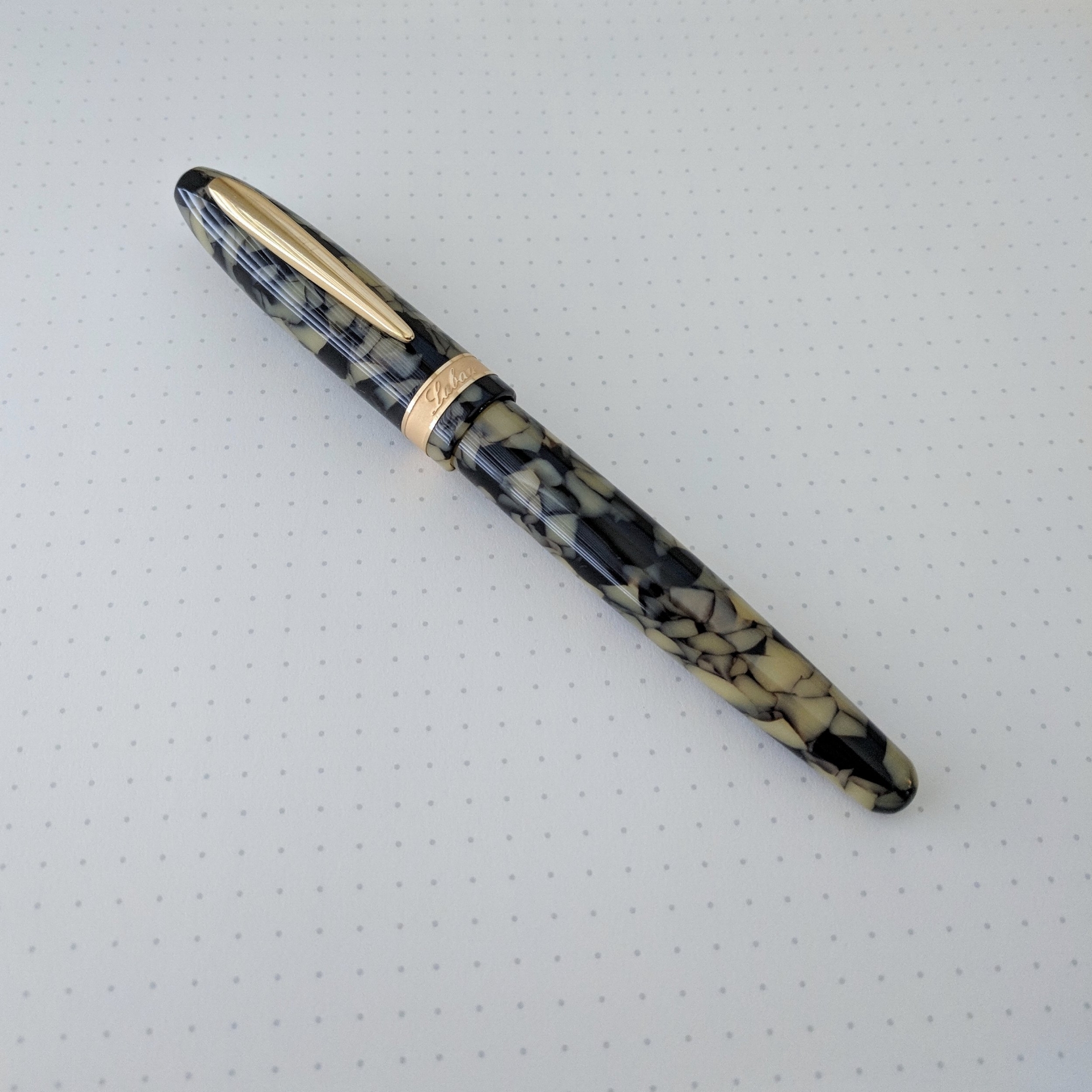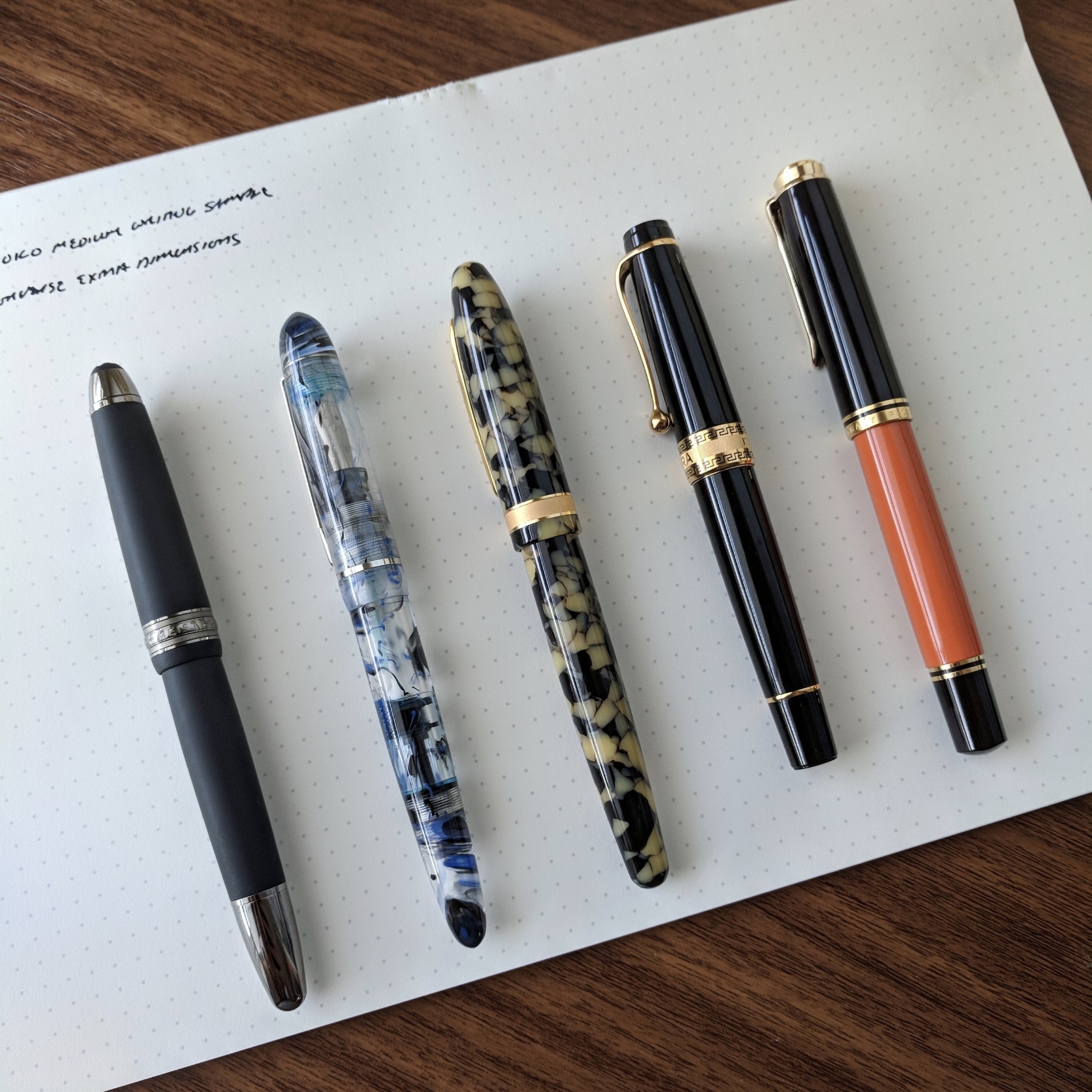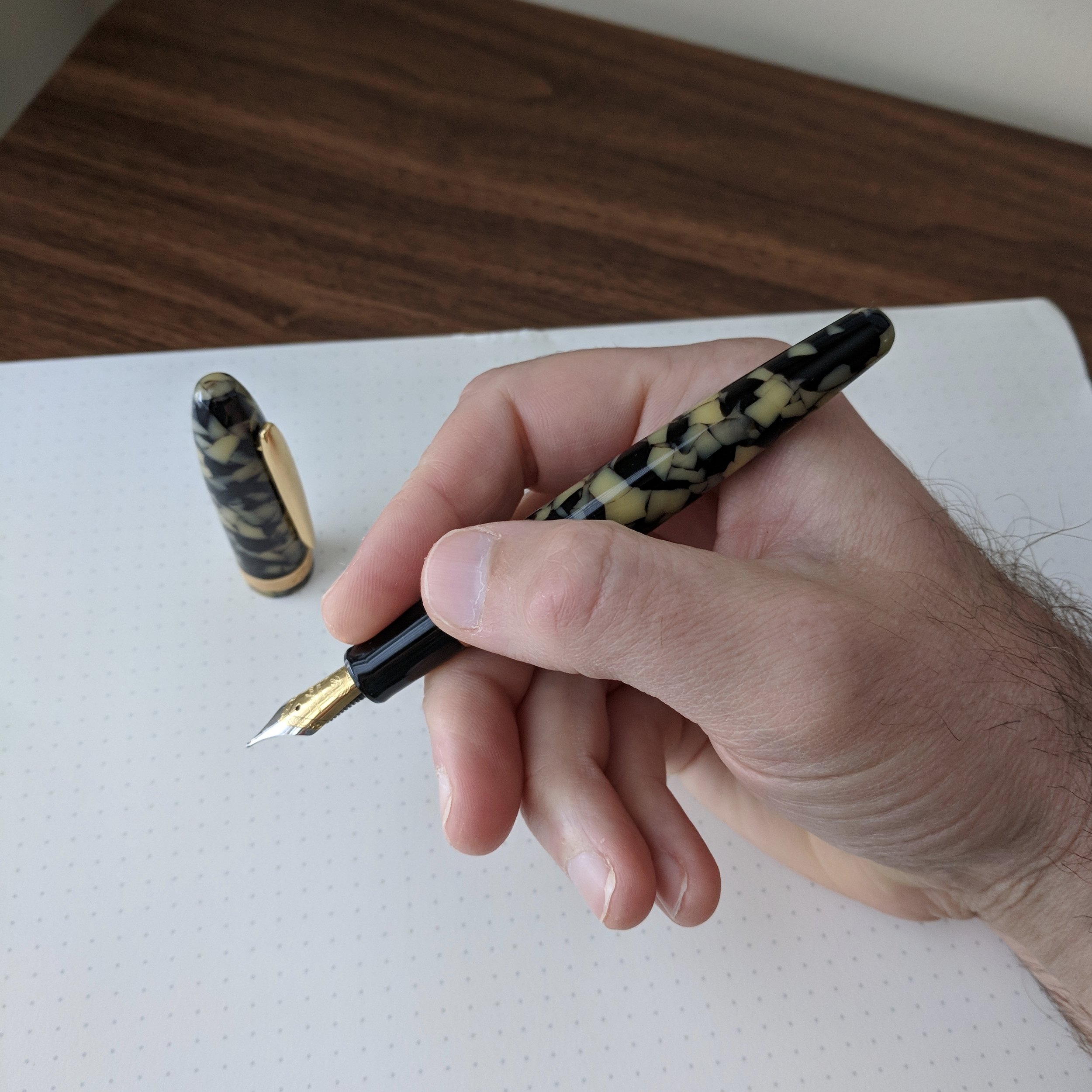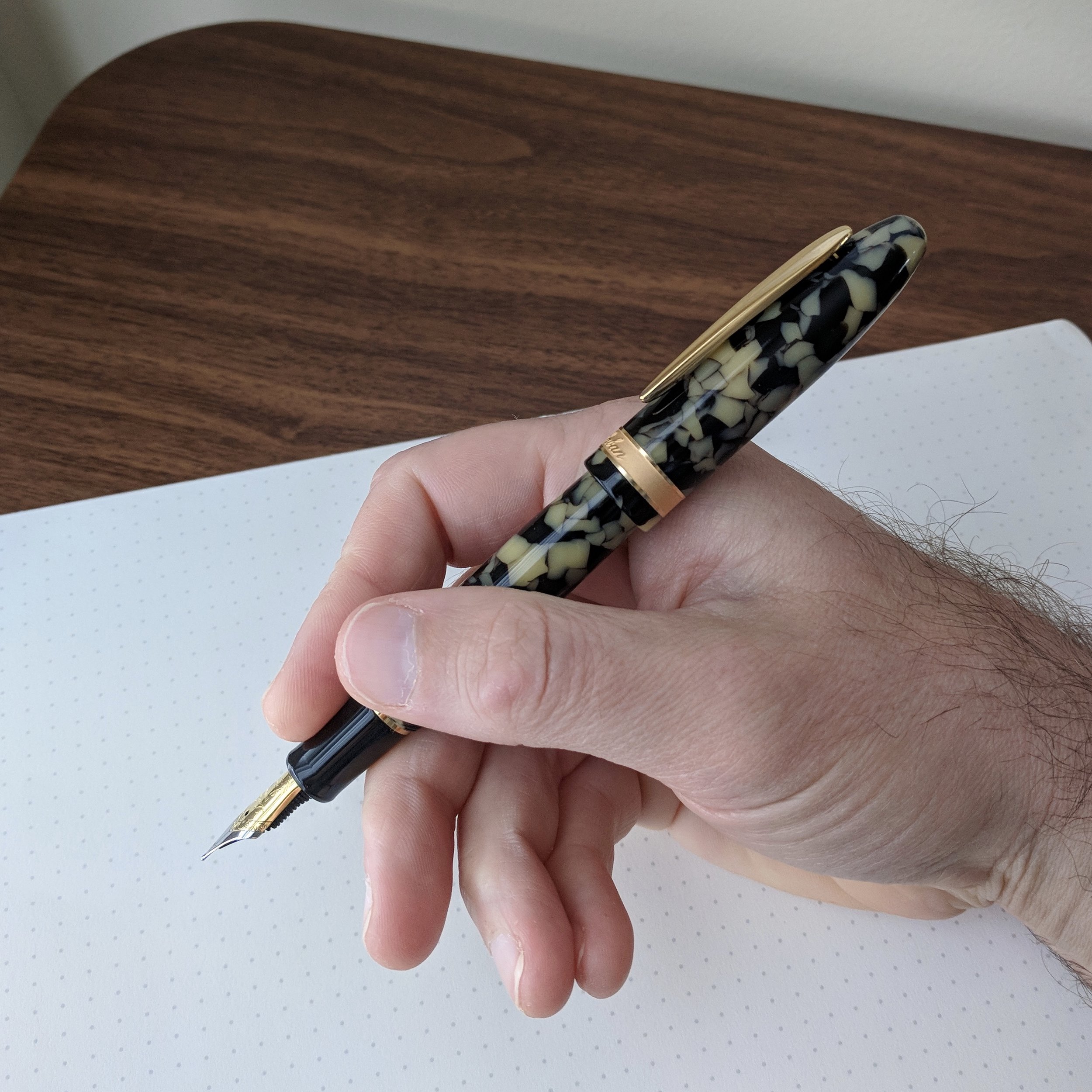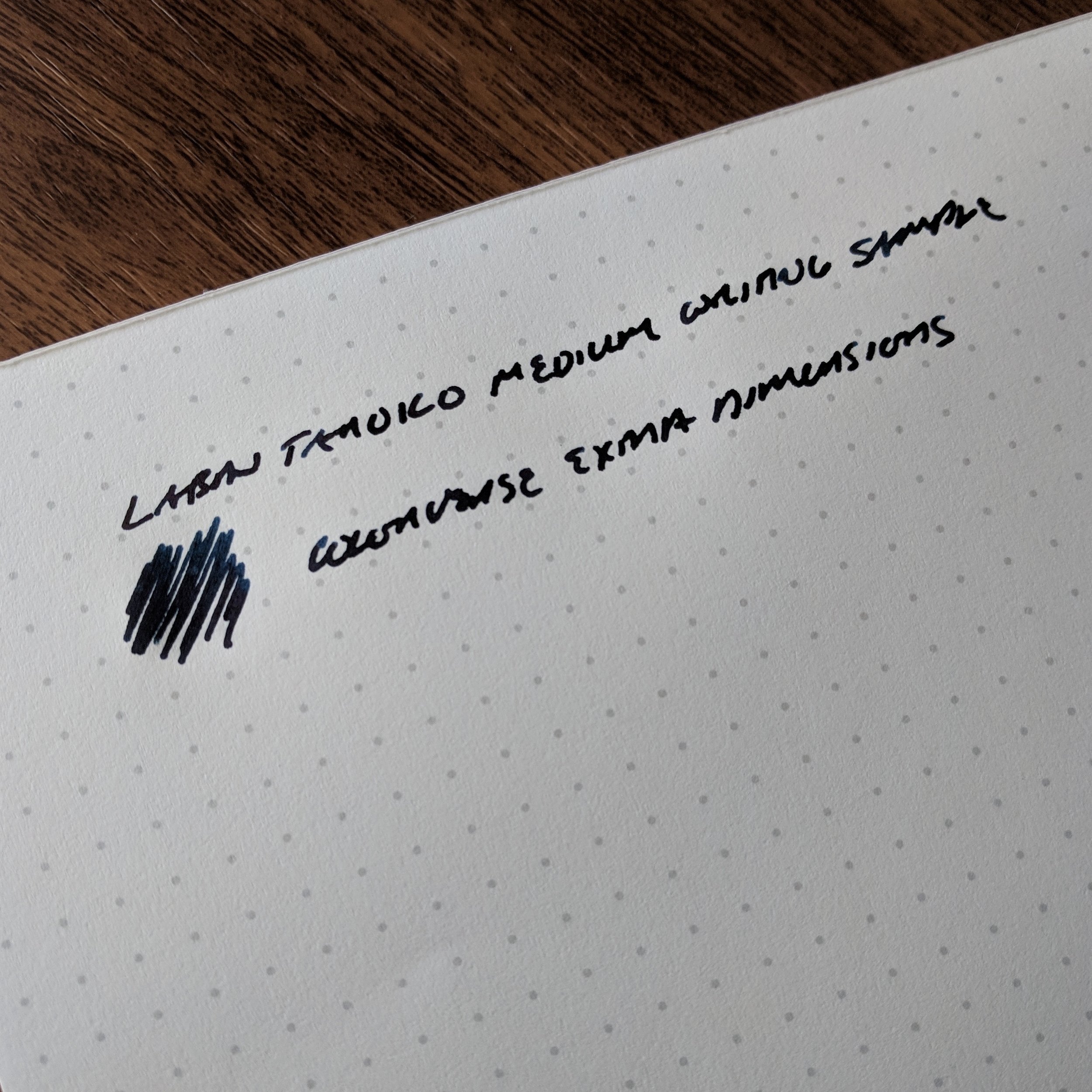Laban set up just down the hall from the table I was working at the 2018 D.C. Pen Show, and the brand continues to surprise me, both in how nice looking their pens are - especially at the price point - and how well they write. The company, based in Taiwan, has apparently been around for quite a while, since 1981. Based on the information I’ve been able to locate online, Laban manufactures its own pens, and they offer a wide range of models in different styles and sizes.
The only branding on the Laban Taroko is "Laban" engraved on the cap band. It's a classic look somewhat reminiscent of the cap band on vintage Parker Vacumatics.
Frankly, I’ve been shocked at how much I like Laban pens. I’ve generally known of Laban as long as I’ve been in this hobby, but had never written with any of their pens until I reviewed the Laban Expression pocket fountain pen. I had, however, long admired many of their acrylics, which have a vintage look and feel to them. If you enjoy dark marble or tortoise patterns, you should definitely check out what Laban has to offer.
Comparison photo, from left: Montblanc 146 Ultra Black; Edison Menlo; Laban Taroko; Aurora Optima; and Pelikan M800.
The pen I’m reviewing here is the Laban Taroko - one of Laban’s mid-price offerings. The Taroko is a classic cigar-shaped fountain pen that I would compare in size to the Montblanc 146 or the Edison Menlo. While it’s on the larger side, because it’s an acrylic pen with a cartridge/converter filling system, the Taroko feels very light in the hand and is comfortable to use over long periods of time posted or unposted. The cap posts firmly on the body of the pen, and I experienced no issues with it rattling or falling off.
Nib and Writing Experience.
Laban nibs are engraved with the logo, which looks much better, imho, than the laser etching you see on a lot of pens at much higher price points.
The nib on the Laban is a standard two-toned stainless steel No. 6, which I peg as a Bock nib based on the design and feed. This means that the nibs should be interchangeable with other Bock No. 6 nibs (and, if your willing to experiment, No. 6 nibs from other brands as well). If you get a good one, Bock steel nibs are solid, if unremarkable, writers. The nib on my Taroko writes a rather wet line, which pleasantly surprised me, as many Bock nibs write dry and need to be adjusted out of the box. While this nib has a hint of feedback, it's not what I would call scratchy and the tines were well-adjusted out of the box. I found the Taroko's black acrylic section quite comfortable to hold for longer work sessions, as there is no dramatic step-down or sharp threads.
The one nit I had with this pen is, as others have noted, that it has a tendency to dry out if it goes unused for more than a few days, and the ink in the converter will start to evaporate if the pen is left unused for more than a couple weeks. Evaporation commonly occurs in fountain pens (especially those on the inexpensive side), but I noticed that it happened rather quickly in the Laban, probably due to the cap not sealing particularly well. This wasn’t a huge deal to me; when I have this pen inked up, I make an effort to use it, which isn’t hard given that it’s so nice-looking and such a comfortable writer.
Takeaways and Where to Buy
Goldspot stocks the Laban Taroko in a wide range of acrylics, including some gorgeous, unique materials that look much more expensive than the actual price point of this pen, which is $103 retail. (Honestly, even the $130 MSRP on this pen is less than I would expect.) As mentioned above, the pen featured in this review is the Taroko in “Dark Forest” acrylic. It’s hard to find manufacturers who are still making acrylic pens in vintage-style patterns reminiscent of older celluloids, especially at the $100 price point. I saw several “must have” patterns on the Laban table at the D.C. Pen Show, so think there may be a couple more Labans in my future, including possibly one of the larger Laban Mentos.
Disclaimer: Goldspot sent me this pen free of charge, for review purposes. I was not otherwise compensated for this review.
